This unpleasant task is finished after 2 days of dirty, smelly and arduous work.
The rust proofing work itself was carried out by Gerry Kennedy (seen below and wearing specialized protective head gear) who has performed the Dinitrol treatment on upwards of a dozen cars, mainly 131s and 132s so there isnt a crevice or an access point that he dosn't know about on these cars!
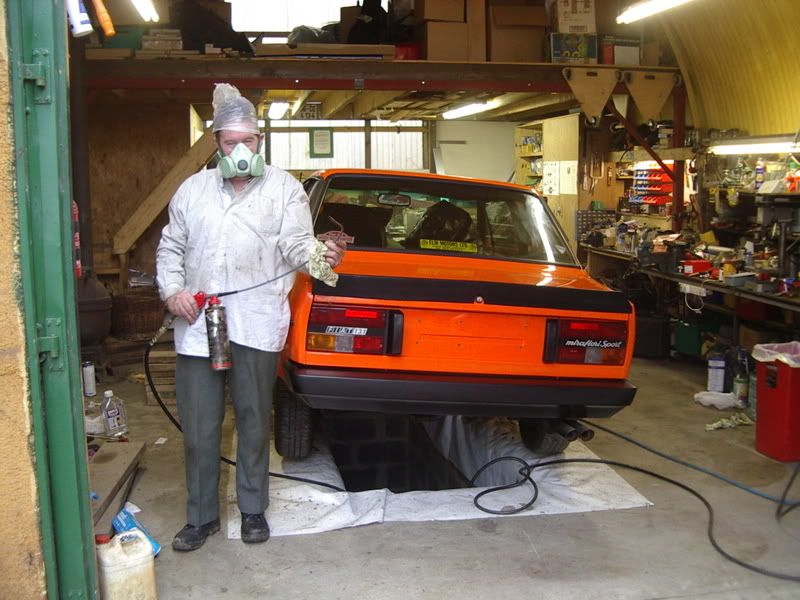
Preparation : As mentioned above some of the exterior trim, wheel arch liners and rear seats were removed. All other fabric was covered over with protective plastic. The car was then left in the workshop heated by a wood stove for 3 days to ensure that it was perfectly dry. (No point in rust proofing a damp or wet car as it only traps in the moisture).
As the workshop belonged to a generous neightbour and knowing that the job was a bit dirty I went looking for a large sheet of plastic. B&Q came up trumps with an obsolete "20% off all power tools" plastic banner which covered the ground under and around the Fiat. An oblong hole cut in the middle allowed access to the pit.
We also has access to an air line which allowed us to dry clean the underbody and wheel arches before spraying.
The job : Gerry started with the underside of the boot lid and my heart sank when I saw the dark streaks and splatters of gunk ruining my polished paintwork. This stuff gets everywhere especially when it is being propelled by compressed air.
After that all 4 wheels were removed and each arch carefully coated, each arch took at least 3 attempts to ensure complete coverage as it is very difficult to see the surface while sprating.
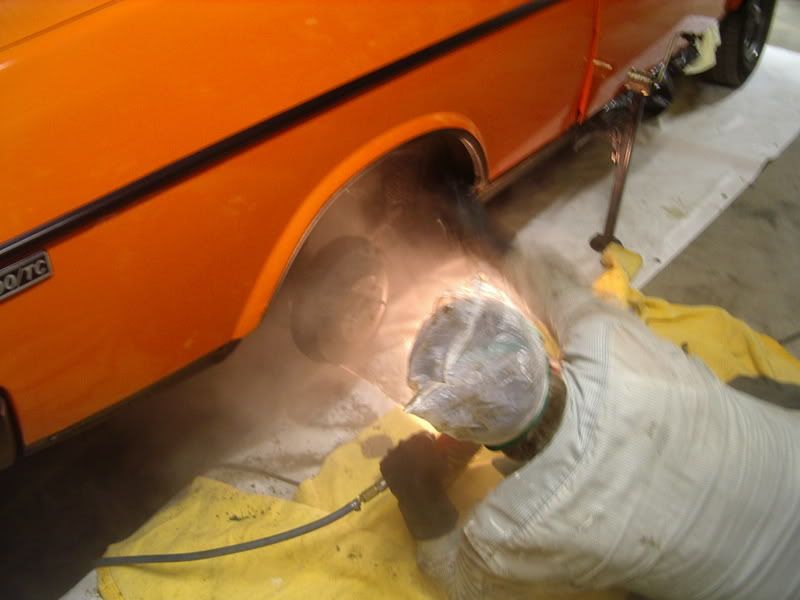
Here is a photo of a finished wheel arch.
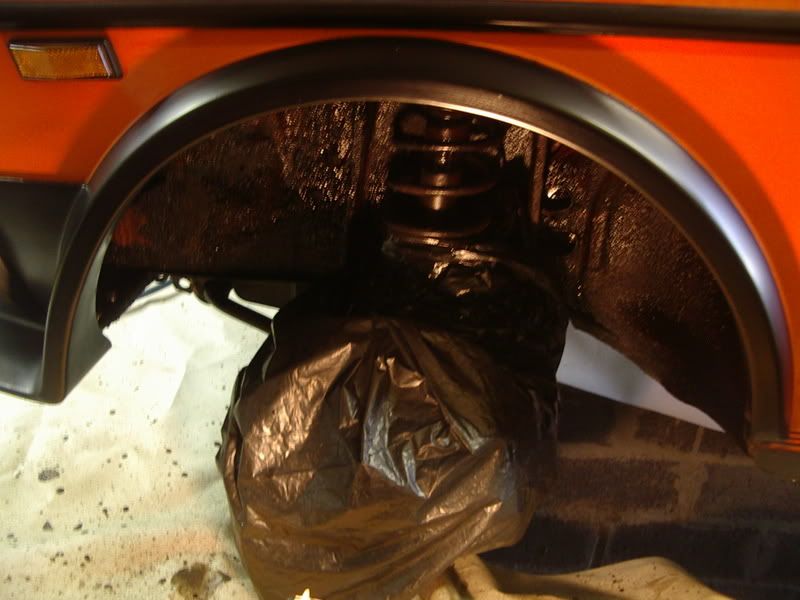
Next Gerry worked on the floor and the following image show what an unpleasant environment it is for the sprayer. Look hard for Gerry - He's there somewhere!

This shot shows some of the original rust treatment from 1985 (still in very good condition) and wet areas showing progress.
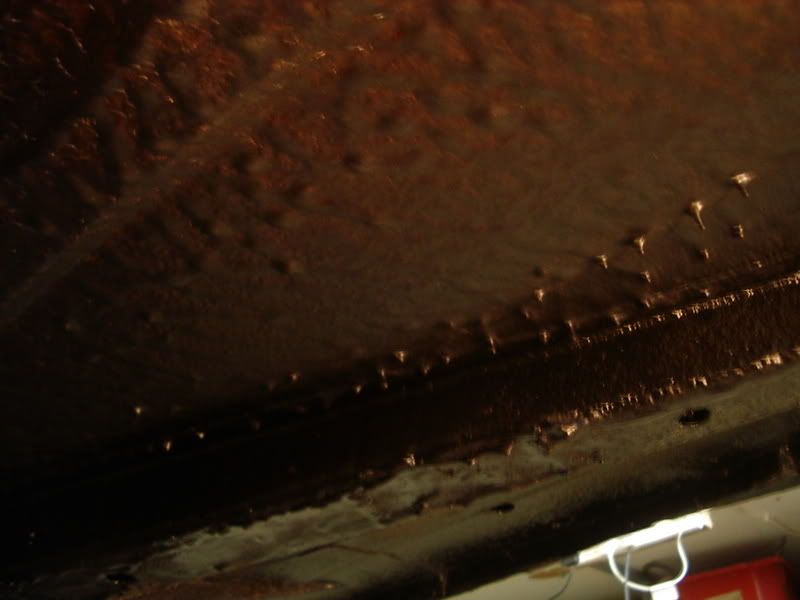
Next job was to change the nozzle for one that produces a ball of spray - Suitable for cavities and box sections. Access points for the cills were found behind grommets in the rear arches. You cant see the spray but you can see the leakage from various holes in the body to indicate that the hose is doing it's job.
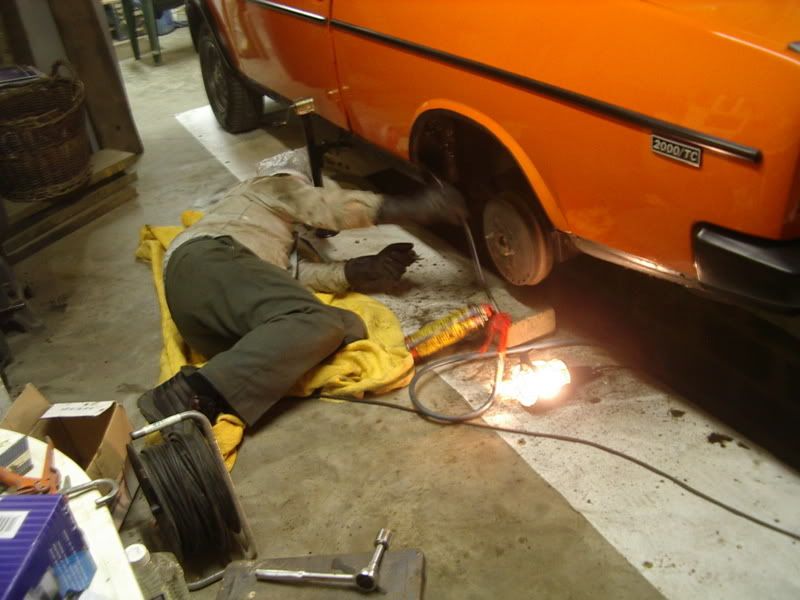
The doors were treated in a similar way as was the rear roof section gained via an opening above the rear vent in the C pillar.
Our biggest challenge was how to access behind the firewall to treat the panel at the base of the windscreen. Neither of us really wanted to strip down this area but then we noticed 2 non standard aluminium pipes emanating from the bulkhead. This is the RHS one and it appears that the original owner had the foresight to make permanent apertures for repeat treatment. Job done in minutes with no trouble!?

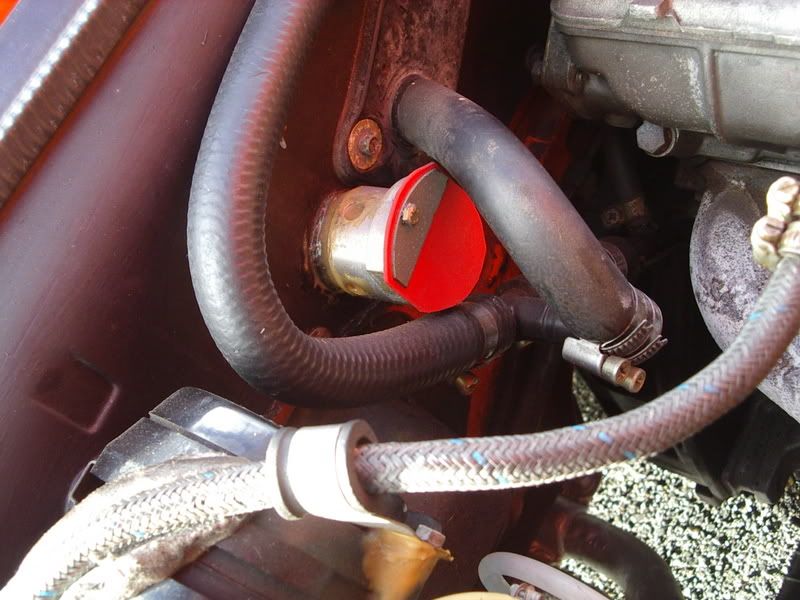
With all the main areas done we went hunting for additional access points. The door operated interior light switch was removed allowing access upwards and downwards. Additional non standrad grommets were found in the inner wings and they received a blast each. We finished with the underside of the bonnet - Every hole in which got the treatment.
Thats most of the account. Would I do it again? I hope never to have to. Even Gerry who does this job out of a love for classic Fiats restricts himself to one or two a year. The job itself can be quite dangerous and apparently inhaled fumes have killed several unwitting users in the past.
Did we do a thorough job? We didn't strip the roof lining or door cards (instead we unpopped them and peeled them away from the door) but felt that as the fact that the car has no rust, the previous owner clearly was very thorough the last time, this combined with the fact that the car is unlikely to see any rainfall (fingers crossed for 3MA?

) we are quite happy with the extent of protection applied. Gerry's son who is an Aircraft maintenance engineer whose job it is to know these things also endorses Dinitrol.
What did the car look like afterwards? One of the results of the application method is that a fine mist of Dinitrol is created which initially rises and then settles over everything - Everything and everywhere. The rivers of grease and gunk that leaked from the car resembled bleeding wounds - I consoled myself with the thought that wounds heal, the cancer of rust can be terminal!?

Next day was completely devoted to getting the car back to normal, 2 hours washing off the grease, another 2 putting back all the trim and the next 2 using the Autoglym products. The car is back to looking pristine again and very much looking forward to it's new set of alloys next month.
After that it is a brake overhaul and NCT test in advance of it's trip around Munster.?

Thanks very much to Gerry and Kennedy of 6milebridge for help and advice on getting to this stage. I hope the account has been reasonably interesting to readers.
Tips if I was doing it again! Strip as much as you can beforehand, cover what ever is left almost as if you were masking before a paint job, cover the surfaces not being treated (roof, engine, etc), make sure that you have a good breathing mask and excellent working conditions...and ask Gerry to do the job for you - You wont get a more committed and conscientious worker for this job!









